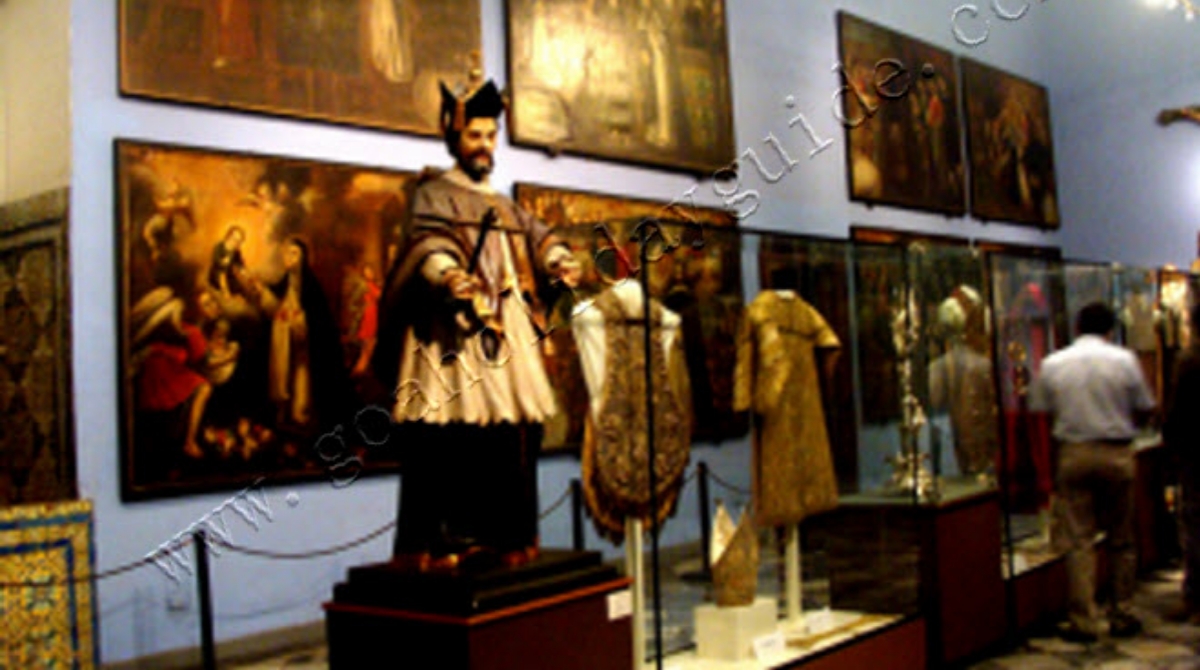Richly embroidered vestments, chalices and different sacred receptacles made out of valuable metals and inlaid with treasured and semi-precious stones, carved ivory, terrific artwork and statuary, all this and greater are on show at the Museum of Christian Art.
The most special component of this tremendous series is that tons of it used to be in reality created with the aid of neighbourhood artists and artisans, many of whom were traditional Hindu artists.
Located as it is in the historic convent of Santa Monica, the museum is in the coronary heart of Old Goa, an area steeped in non-secular records and topped with many essential spiritual monuments.
The museum’s series is tremendous and properly maintained. It is one of the few establishments of its type in Asia.

How to Go To The Museum of Christian Art
The Convent of Santa Monica in Velha Goa is the current location of the Museum of Christian art in Goa. The convent building itself is of architectural importance due to its age and history. Located in North Goa, this museum is easily accessible from both Panaji and Margao.
When to Go To The Museum of Christian Art
The museum is open all the days of the week from 9.30am to 5.00pm. The crowds are at their max during the tourist season (October to March) but it is also a great way to spend an afternoon, or even a full day during the rainy season (June to September)

What to See
The intricately and lavishly embroidered vestments which priests would use to say mass, are some of the most popular artefacts in the museum. Along with these is a portable “mass kit” that priests could carry with them when going to say mass in the outlying villages.
There is a beautiful painting of St. Ursula which once adorned the walls of the Se Cathedral, and is now a permanent part of the museum’s collection.
The 17th century image of Jesus, the Good Shepherd is carved from ivory and is a well-known piece in the museum’s collection.
There is curious bust of St. Margaret of Antioch which has a well-defined cavity in the chest, meant for the repose of a relic of the saint. In front of the statue is a reclining mythical creature, most probably a dragon.
In addition to these well-known artefacts there are a number of other pieces on display at the museum. These include chalices and salvers made of precious metals, sculptures, paintings, carvings on wood and ivory, crucifixes and other adornments and implements used in the ritual of holy mass.
History of The Museum of Christian Art
The museum was founded in 1994, and was the first of its kind in all of Asia. INTACH (Indian National Trust for Art and Cultural Heritage) with assistance from the Calouste Gulbenkian Foundation, Portugal and under the auspices of the Archdiocese of Goa originally set up the museum at the Rachol seminary.
However, when this location was found to be not central enough, the museum was shifted to the Convent of Santa Monica, one of the architectural and religious monuments of Old Goa. The purpose of the museum has been to highlight the treasures of Indo-Portuguese Christian art from churches around Goa. The age of the piece’s ranges from the 17th century to the middle of the 20th century.
The museum also highlights the fact that many of its treasures were created by Hindu artists and artisans during the time of the Portuguese colonialism. The story goes that the demand for religious artwork was extremely high at the time and pieces could not be shipped from Portugal to satisfy the demand and so many Hindu artists were contracted to complete the religious artworks.
Over the course of the years, the artisans came to incorporate many of their own techniques and vision into the Christian art, thus creating a unique style of art. The saints subtly became less emaciated, the facial expressions became less pained and more serene and the flourishes and enhancements became subtly more Indian.
The Church of the Weeping Cross
As part of the shift in venues from the old Rachol seminary to the new location at the Nunnery of Santa Monica, the building itself was given a facelift. In particular the Church of the Weeping Cross or Cross of Miracles underwent extensive repairs and renovations to restore it to its former glory.
Besides superficial work like repainting, wooden altars that had decayed with age due to termites and rot were refurbished, statues and other decorative touches were painstakingly restored, and plasterwork was undertaken in keeping with the building’s heritage status.
The chapel is well known because of the cross within. It is said that the statue on this cross wept tear of blood in the 17th century. After this, pilgrims from around the world visited the site to pray and be blessed and hopefully to witness a recurrence of the miracle.
The museum is a slice of time, preserved for the generations to come. The history that it holds shows what can be accomplished when two cultures and religions come together harmoniously to create something of beauty and value.
Please note: Photography is not allowed within the museum premises.



